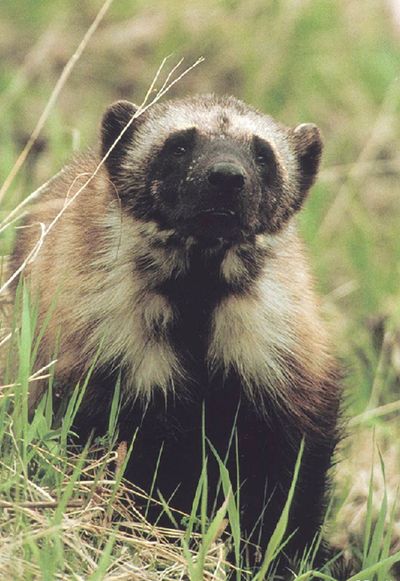Federal officials say wolverines need protection

HELENA, Mont. — Wolverines should be added to the list of endangered and threatened species, but other species considered in greater danger will prevent the small, ferocious mammal from protection for now, the U.S. Fish and Wildlife Service said today.
The federal agency’s decision found that the North American wolverine is a distinct population segment in the contiguous United States and that its addition to the Lists of Endangered and Threatened Wildlife and Plants is warranted.
“Currently, however, listing the contiguous U.S. (population) of the North American wolverine is precluded by higher priority actions,” the ruling posted on the agency’s website reads.
Instead, the animal will be added to a candidate species list and the Fish and Wildlife Service will develop a proposed rule to add the wolverine population to the list as the priorities allow.
Fish and Wildlife Service spokeswoman Diane Katzenbach said the length of time the wolverine remains on the candidate list depends on the number of species ahead of it and when funding would be available to add it to the endangered and threatened species list.
Scientists don’t know exactly how many wolverines are in the contiguous U.S., but they estimate there are 300 or fewer, most living in the northern Rocky Mountains.
Two years ago, the agency found the wolverine was not eligible for listing under the federal Endangered Species Act because it did not constitute a distinct population segment.
Environmentalists sued, and last year the agency agreed to study the matter again and issue a new finding this month.
Tim Preso, an attorney with Earthjustice, said in a statement that today’s decision reverses past denials by the federal government that the wolverine faces the threat of extinction.
“Unfortunately, the decision still fails to give the wolverine the legal protections that it needs. We will continue to work to make sure that the wolverine remains a living, breathing part of our nation’s wildest landscapes,” Preso said.
Predator control in the early 1900s wiped out the wolverine population in Colorado and Utah and reduced the population in the northern Rockies to historic lows, the Fish and Wildlife Service said.
Populations then increased as predator controls subsided and trapping regulations became more restrictive.
Wolverines likely exist as a network of semi-isolated populations, and they require gene flow between groups to support each other and prevent individual populations from going extinct. If that dynamic breaks down, the entire population may be jeopardized, the Fish and Wildlife Service said.
The ruling said that outcome is likely due to wolverines’ naturally low reproductive rates and low densities.
The Fish and Wildlife Service says wolverines’ range in the contiguous U.S. includes portions of Montana, Idaho, Washington, Wyoming, Colorado, Oregon, Utah and California.
The wolverine has a broader range in Canada and Alaska, territory separate from the newly designated distinct population segment. In Canada, wolverines are considered endangered in the eastern part of the country and a species of special concern in the western part of the country.